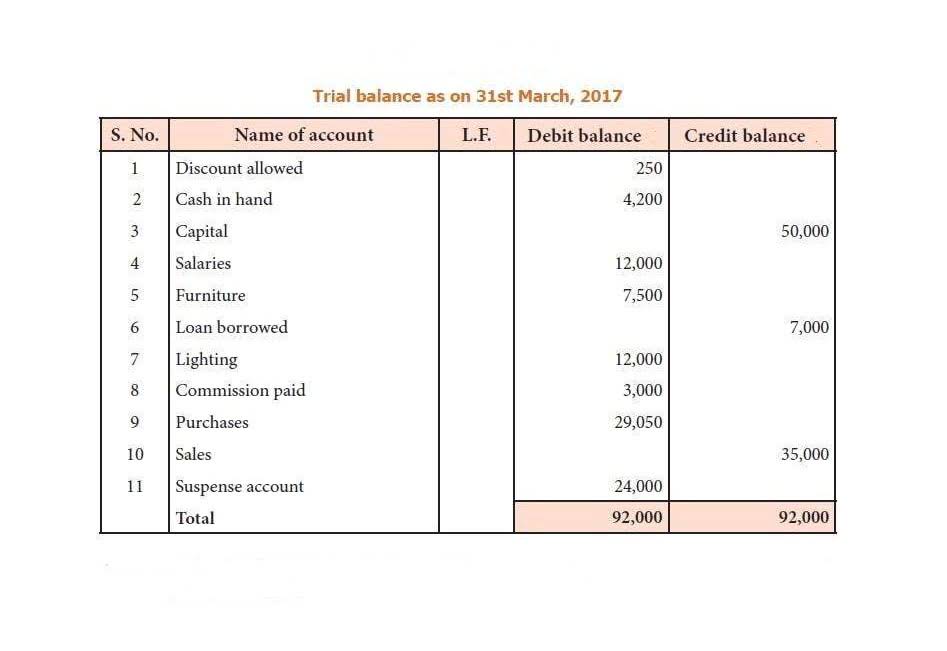Content
- What Makes a Good Budget: The Categories
- Step 1: Review your revenue
- Your fixed costs
- Best Startup Business Loan Options for Entrepreneurs
- Things to Consider When Planning an Annual Budget for your Business
- What Should You Include in Your Budget?
- How to Create a Business Budget for Your Small Business

This is a good time to make alterations to the income statement line items, if you think that having more or fewer lines items would be more understandable for readers. Once your company budget is complete, you’ll have a standard business budget template to follow. Then you can use it to remake your business budget based on current information every quarter or every other quarter. Create the following month’s budget based on what you learn and where you want to go. Over time you should develop a complete picture of your annual budget and be able to accurately predict and plan for seasons and growth. If you have past financial data, use these fixed costs and adjust them for any rent increases, bill increases, or new costs.

Enterprise businesses typically have several hundred employees or more. Worst case scenario, in which you show your least optimistic scenario, with very little sales during the first six months to a year. If you are working from home, you probably won’t have location costs How to Create a Business Budget but you may have costs to fix up a room in your home for an office or a small production area in your garage. I understand that the data I am submitting will be used to provide me with the above-described products and/or services and communications in connection therewith.
What Makes a Good Budget: The Categories
Include a collections percentage along with your estimate of sales for each month. For example, if you estimate sales in month one to be $50,000 and your collection percentage is 85%, show your cash for the month to be $42,500. Materials and supplies, like office supplies, advertising and promotion materials. The less you need for your business startup, the sooner you can start making a profit. Fractional CFOs are inexpensive as their utilization fits only what your small business needs and can offer invaluable insight. Once that’s all done, here are five tips to make the budgeting process simpler and more impactful.
What is the best budget planner?
- Clever Fox Budget Planner.
- Erin Conrad Budget Planner.
- GoGirl Budget Planner.
- The home Budget Workbook.
- Weekly and Monthly Budgeting Notebook.
- Balanced Budget Organizer.
- Clever Fox Budget Book.
- Legend Budget Planner 11. Mead Home Finance Organizer 12. Limitless Mindset Budget Planner.
Hence, the majority of your business’s yearly revenue will be gotten during the winter season. During those slow periods, you will need to spend meticulously to avoid putting your business at the risk of closing down. Also, you can give your customers a period of grace to make payments to encourage payment.
Step 1: Review your revenue
Chances are higher that you’ll have successful negotiations and, as a result, lower variable costs per unit. Misallocation of resources is a plague that is equally harmful to small businesses and large corporations.
- Furthermore, budgets should always be compared to actual results to understand why there are differences.
- We can help you with SBA loans, grants, or other business financing options.
- You may have a forecasted salary for an employee, but overtime or extra hours due to extra work could raise this cost.
- Without a budget, these may go unpaid and lead to avoidable issues.
- Try to abide by the maxim that if you budget for a problem, the emergency never comes up.
Create folders and processes for anything related to your budget, so you don’t waste time looking for lost receipts or sales data. First, add all your income streams together, then add up your different expenses. Next, subtract your total expenses from your total revenue and you’ll have either a positive number, meaning your business turned a profit, or a negative number, which is a loss. Some examples include rent, payroll , supplies, website hosting, insurance, accounting software, bank fees, cell phone, loan payments, etc. It’s also important to determine if any of these could go up this year, as that will play into your calculations. A fixed cost is an expense that remains stable over a week, month, or year.
Your fixed costs
Similarly, you can also calculate the variances by automated calculators integrated into the templates or budgeting software. This example can be treated as a small business budget sample when you’re preparing your business budget. After feedback, address any reservations from a team member or reconcile the draft for any changes suggested by team members. Get the final budget approved and implement it in the future.

Often, you can’t predict when something will go over budget. Additionally, employees should know about any changes you make that might affect them or your company so they understand what is expected of them going forward.
Best Startup Business Loan Options for Entrepreneurs
It’s no surprise that starting a business requires a decent chunk of money, but expenses don’t end once you’re up and running. As a small business owner, you’ll want to create and maintain a reliable budget to keep your finances in check. Without a budget or a plan, a business runs the risk of spending more money than it is taking in, or conversely, not spending enough money to grow the business and compete. Utilities based on usage, such as gas or electricity, will change each month. Inventory and materials may fluctuate based on sales or market needs. You will want to look at your variable costs for 3-6 months if possible to get a feel for averages and patterns. While you might spend a lot on office supplies one month, you may not need any for the rest of the quarter, and can begin to plan for that expense.
Bankers and other financiers may want to see a budget when you ask for a loan. Employees should also be privy to the budget so that they understand where the business is going and are motivated to work harder. “It would be stupid not to share this with employees. Everybody should know what the goal of the company is. It’s a group goal,” Butcher says. “Don’t expect your staff to meet your goals if they don’t know what they are.” A budget will also give you a much better idea of what your cash flow will look like. This will help you avoid running out of money and getting into a tight spot with creditors. Setting a budget is part of becoming financially literate, and it’s a vital skill.
Things to Consider When Planning an Annual Budget for your Business
Trade credit is a type of commercial financing in which a customer is allowed to purchase goods or services and pay the supplier at a later scheduled date. Personal finance is all about managing your personal budget and how best to invest your money to realize your goals. Small businesses can be extremely volatile as they are more susceptible to industry downturns than larger, more diversified competitors. So, you only need to look for an average here, not specifics. Yarilet Perez is an experienced multimedia journalist and fact-checker with a Master of Science in Journalism. She has worked in multiple cities covering breaking news, politics, education, and more.
- “Everyone would like to see sales double each year but the odds of that happening are very unlikely,” Butcher says.
- You can check the step-by-step guide to create a small business budget to know what should be included in a small business budget.
- These changes will be necessary, if you want to keep the budget model relevant as a basis of comparison to actual results.
- A template will have all the available information, and your job will simply be to fill in the spaces with your estimates.
- Fixed costs can be daily, weekly, monthly or yearly expenses.
- Work out how much each department of your business will need to spend in both the short and long term.
- Get the final budget approved and implement it in the future.
Besides the web-based version, Divvy has an impressive small business budget app offering convenient drafting and tracking of the budget on the go. In short, it is an all-in-one software that will cover all finance-related requirements of your business in addition to budgeting.
The first step in any budgeting exercise is to look backward at your existing business and find all of your revenue sources. Add all those income sources together to discover what money comes into your business on a monthly basis. Here’s a step-by-step guide for how to create a business budget. As you get started with creating or revamping your budget, keep in mind that there are templates available that can help get you started. A business budget is a document that should be updated and referenced frequently, so you want to ensure that it is easy to use and up-to-date.
- If the difference between revenue and expenses (aka “profit margins”) aren’t where you’d like them to be, you need to rethink your cost of goods sold and consider raising prices.
- Pulling it all together to get a comprehensive view of your financial standing for the month.
- A variation is to break the cost of goods sold into several line items, such as labor, materials, overhead, and freight, so that you can make more detailed estimates.
- Make sure these figures gel with what you have written in your business plan and leave a wide margin for unforeseen expenses.
- If you run a service-based business, you’re working with more estimates than a product-focused business.
- It outlines key information on both the current state of your finances and your long-term financial goals.
For a startup business, begin by estimating what type of realistic profit you’d like to see in the coming year. The reason you start with sales and/or profits is because this information will drive the rest of your estimates for costs, expenses, and capital expenditures. To create a business budget, start by forecasting your yearly expenditures. To do this, add together fixed costs like rent, insurance, and property taxes. Then, add variable costs like inventory purchases and semi-variable costs like internet packages or employee salaries. If your revenue is lower than your expenditures, figure out places you can cut from your budget. A business budget plans for income and expenses over a period of time, typically a year.
Looking back on performance and budget can help keep small businesses informed and adjust future choices and goals relating to your company’s financial well-being. This is set aside for one-time expenses that are not included within variable expenses.

Take an example of a small business that prepared a business budget and found the income can support the investment of $20,000 in marketing. The marketing person thinks that a new media campaign worth $30,000 is a fantastic growth accelerator. The concept of budgeting is all about identifying your available resources, estimating your expenses, and planning ahead. It is one of the first and most important building blocks of your business action plan. One of the biggest reasons why most small businesses fail in their early years is not having a proper business plan and not enough financing.
While it may seem advantageous to show investors that the company will significantly grow, it’s a possibility that results may disappoint. Even worse, business decisions may have been made using such projections . When in doubt, it is a good idea to be more conservative and leave some room in the projections in case of emergency, unforeseeable https://www.bookstime.com/ large expenses, or a drop in revenue and sales. The majority of cash collections are from sales and the bulk of cash payments are for inventory. When a business sells inventory, the dollar amount transfers to the cost of sales, which is the largest expense in the budget. So it makes sense that the biggest cash outflow is for inventory.
Streamline expenses and improve visibility into business spend. Then during those peak months, you should aim at generating more revenue that will help you sustain your business during the slow months. In a case where the expenses are more than the amount of money you are making, you will need to identify those expenses that your business is not benefiting from and cut them off. If you are just starting a business, you would have no previous record to use as a point of reference in making your estimate. In other words, budgets help a business to smoothly operate financially.
What are the 7 key steps in creating a budget?
- Step 1: Set Realistic Goals.
- Step 2: Identify your Income and Expenses.
- Step 3: Separate Needs and Wants.
- Step 4: Design Your Budget.
- Step 5: Put Your Plan Into Action.
- Step 6: Seasonal Expenses.
- Step 7: Look Ahead.
Perhaps this is training courses or new software, or maybe it’s marketing or research and development of new products. Items in this category could be new hardware such as laptops or label makers—these aren’t going to be items you buy every six months but will likely pop up every couple of years. And when you consider these one-time spends are often for things crucial to the running of your business, you’ll quickly realize why it’s essential to budget for them. A business budget is something that you regularly update, giving you the best overview of how your brand’s future finances should look. You fill it with your day-to-day expenses, future income, and upcoming investment, and it will help you better prepare to meet your long-term goals.
P&L statementis a high-level overview that shows whether your organization is profitable or in the red. Every successful business needs a budget, and here are some tips on how to make one that works for you. Access all Xero features for 30 days, then decide which plan best suits your business. But most of all, a budget gives you more certainty and confidence. You get a clearer picture of the state of your business and you know where you stand.
When creating custom order products, factor in enough time and materials. It may be a good idea to include a reasonable buffer to ensure you turn a profit. We also encourage custom order businesses to require a deposit upfront. Without a physical product, your estimations will be based on the amount of workflow and projected hours of consultative services. Focus your income estimation on sales projections and consultant costs. Seasonal businesses that have a high season need to be especially particular with budgeting.
